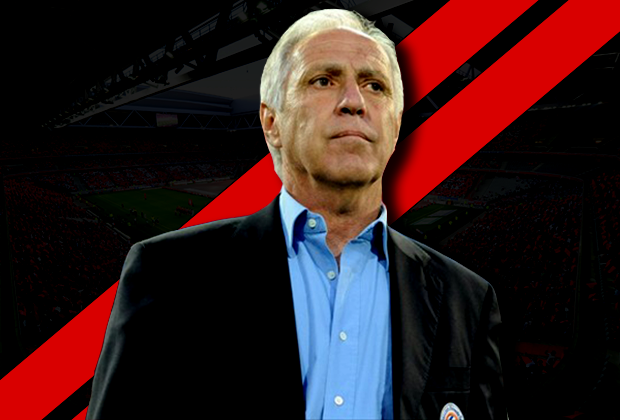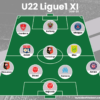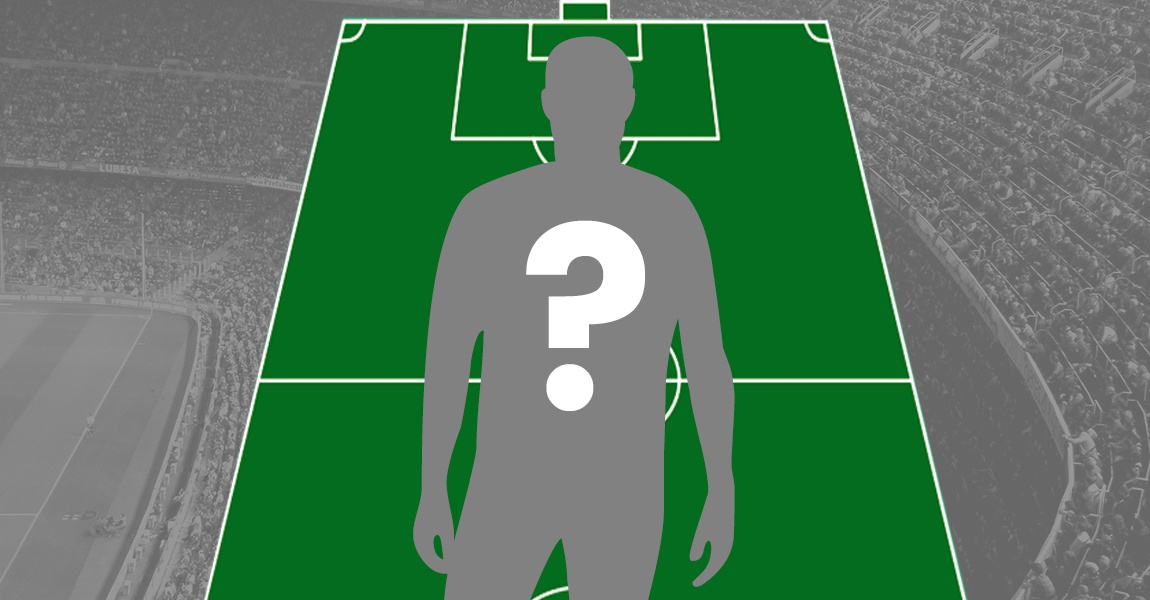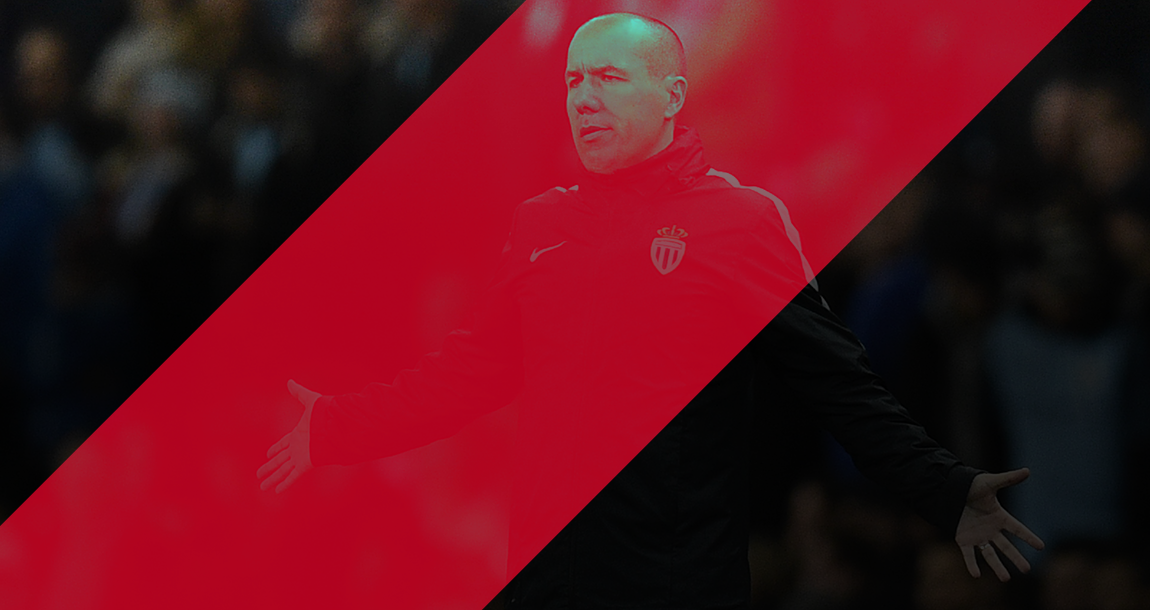Eric Devin provides a tactical look at the present state and future of French football club, Lille who currently sit 8th in the Ligue 1 standings.
Despite the money spent at Monaco and Paris Saint-Germain last season, the story of the season at the winter break in Ligue 1 last year was surely Lille, who had conceded only eight goals to that point, buoyed by a remarkable run of eleven games without conceding. That run had come to an end in a Week 17 loss to Bordeaux, as an unlucky deflection found the back of Vincent Enyeama’s net and Les Dogues stumbled to a 1-0 defeat on the road. Quickly righting the ship, a win against Bastia and a more than creditable draw at PSG left the northern side only a point behind Monaco and four behind the leaders at the break, a fine achievement in Rene Girard’s first few months in charge, especially considering the team had been stripped of much of its offensively minded talent in the summer, with the departures of Dimitri Payet, Florian Thauvin and Lucas Digne.
Lille’s flying start was a surprise not only for its nature, but for the inventiveness demonstrated by Rene Girard in executing it. The manager wasn’t necessarily renowned for his defensive nous during his time at Montpellier; in their title winning season of 2011-12, they had done well to concede only 34 goals, but in the process employed a somewhat negative 4-2-3-1/4-3-3 hybrid. This system, while effective, was essentially nothing but route one football, with John Utaka and Souleymane Camara, their bulky frames far from those of the archetypal winger, pushed forward to provide support for Olivier Giroud from wide areas and one of Younes Belhanda or Remy Cabella acting as a trequartista, linking play by running with the ball at their feet. With Belhanda tending to sit slightly deeper than Cabella, playing balls over the top as opposed to keeping the ball on the ground, this allowed for a versatility in terms of intent by switching between the two, but not in any final sense, as getting the ball to Giroud was still the desired end product. Unimaginative though this approach was, with the big striker enjoying a fine season and Belhanda chipping in with ten goals, having six men behind the ball and trying hit teams on the break proved remarkably effective, as the team won eight of their final ten matches to sew up the title, the perfectly opportunistic blend of defense and attack.
However, in the following season, with Giroud now at Arsenal, having been replaced by the Argentine striker Emmanuel Herrera, Girard showed a confounding loyalty to his new acquisition, and to the formation which had been so successful in the previous season. Herrera played the bulk of the minutes as a main striker, even though his ability to win balls played in the air paled in comparison to that of the Frenchman, with a success rate of only 25%, compared to Giroud’s nearly 70%. In an effort to facilitate the attack which had been so successful in winning the championship, however, Utaka and Camara retained their places, which meant that both Cabella and Belhanda started in a 4-3-3, acting as de facto dual playmakers from wide areas, with Cabella often straying to the right wing to afford Belhanada a bit more space. Instead of two defensive midfielders, only one was often used, and even when two were employed, with Cabella starting on the right wing in a 4-2-3-1, the attempts of players like Marco Estrada and Jonas Martin to get forward with the ball at their feet, hoping to link play, were generally unsuccessful, and when dispossessed, left Montpellier wide open to counterattacks, especially with left back Henri Bedimo often more concerned with getting forward than tracking back. While their elimination from the Champions League did well to re-focus their efforts on the league, eventually coming ninth after flirting with relegation for most of the autumn, this susceptibility to getting caught on the break was the main reason for their struggles, as with 51 goals conceded, but a positive differential, MHSC did well to score, but conceded far too many easy chances at the back, a weakness which was ultimately their undoing.
Nevertheless, when Rudi Garcia departed for Roma in the summer of 2013, Girard’s having won a title on a shoestring was a recent enough event that Lille were only too happy to spirit the manager away from the south coast. Starting the season, Garcia recognized that with the departure of Payet in the off-season, goals would be at a premium, and employed a 4-3-1-2, with Marvin Martin supporting a front two of Salomon Kalou and Nolan Roux, the combination of the former’s pace and the latter’s physicality and graft the key to unlock defenses without putting a slower, older back four at risk. However, during the aforementioned run of clean sheets, Martin injured his knee, and figured in only a handful of matches after October after struggling with his recovery. Lille hardly missed a beat, however, only losing twice in the eighteen matches without their record signing. Ronny Rodelin generally took Martin’s place in the starting line-up, as his ability to win aerial duels made him an ideal outlet for long balls from defensive midfield, able to knock the ball down into the path of Kalou or Roux, and generally occupying defenders with his 6′ 4″ frame. While Lille weren’t the force of the first half of the campaign with this line-up, Kalou continued to be the same opportunistic player that he had been under Garcia, finishing with 16 league goals. With the former Chelsea man in fine form, the club managed to finish third, booking themselves a place in the Champions’ League playoffs and taking full advantage of the stumbles of Marseille and Lyon, Girard being rewarded with his second UNFP Manager of the Year award in three years.
Fast-forward to the current season, and Kalou is now on the books of Bundesliga side Hertha Berlin, having joined the German club for a cut-rate €1.8M. The fee, seemingly ludicrously low for a player who was France’s third-leading scorer in 2013-14, is a fine indication of the financial constraints in place at most French clubs. With Divock Origi (far from a revelation with Lille, but at 19, having evinced enough promise in the World Cup to place him on bigger sides’ radar. Origi also featured on our list of Top 100 Best Young Players) also sold in the window, to Liverpool for a more robust €12.6M, a re-think of LOSC’s tactical approach was seemingly necessary. With attack-minded right back Sebastian Corchia arriving from relegated Sochaux and Swiss Under-21 striker Michael Frey in from Young Boys, transfer traffic was far from one way, as the arrival of Frey was one of the bigger spends outside of Paris, and the players necessary for an offensive re-think were in place.
At Montpellier, however, Girard had shown a rather disturbing lack of tactical flexibility when coping with the loss of Giroud, trying to shoehorn both Cabella and Belhanda into the side and playing them both out of position in the process. While trying to play his two most offensively talented players at the same time is a logical approach in a Ligue 1 generally starved for goals, it did have the aforementioned result of making MHSC quite poor defensively, and survival was unnecessarily a struggle. This season at Lille has been unfortunately marked by the same adherence to a system despite the departure of it most important component, Kalou. No one would ever grant the Ivorian the privilege of being called anything more than a poacher, but he was an exceptional one for Lille over the past two seasons, his finishing instincts being the difference between third place and a relegation scrap, being involved in almost half of Les Dogues’ goals.
This season, however, while Lille’s defense has been similarly impressive to last season, with the advancing age of players such as Marko Basa, Florent Balmont and Rio Mavuba naturally seeing a slight drop in results in this regard, the Ivorian’s absence has been keenly felt, as Lille have stumbled to a mid-table start in the league. While a surprising win against Lyon last weekend has dragged them six points clear of the relegation places, they are still far from safe; a win by the visitors would have seen Lille only one point above Lorient in 17th, their stuttering attack the third-worst in the league thus far. While the lack of an experienced striker to take Kalou’s place is the obvious hole in the line-up, with Origi unable as yet to fully shoulder the burden of being a front line leader, his pace best deployed as a substitute, the overall thrust of Girard’s side is also worthy of a close examination. The lack of goals at present stems not only from a lack of an outlet striker, but from a general over-reliance on last season’s stars and tactics. As we shall see, Girard has made feeble attempts to move past last season’s success, but as yet seems to lack the fearlessness that he displayed in his final season at Montpellier, though he may yet have learned something from Lyon’s visit over the weekend.
Variously labeled as a 4-3-3 and a 4-3-1-2, depending on the identity of the player used in front of the midfield three, as outlined above, Lille’s tactics this season have largely continued in the same vein of last year’s more successful variation, with a midfield three of Rio Mavuba behind Idrissa Gueye and Florent Balmont. While all hard-working, defensively sound players, each are likewise ultimately flawed at facilitating things offensively, and one should be dropped to the bench to employ a 4-2-3-1 similar to the one used for Lyon’s visit more often, with Manchester City loanee Rony Lopes operating in a manner similar to the way that Nantes’ Jordan Veretout has done this season, and Belhanda did under Girard at Montpellier. Like the Frenchman and the Moroccan, Lopes’ role in this system wouldn’t necessarily be that of traditional number ten, as he wouldn’t totally abdicate his defensive responsibilities, but look to be either a creative option in the box or a goal-scorer with the ball at his feet, running from deep to take on a shot or to create, utilizing the space created by a physical, yet mobile striker, Kevin Koubemba on the day.
Both of the goals that Lille scored at the previous weekend demonstrate the opportunities that Lopes in this role can generate while still retaining an overall defensive solidity. For the first, Lopes played a neat one-two with an onrushing Gueye, the Senegalese neatly slotting home his third of the season, demonstrating the potential dividends of involving he and Mavuba, who, despite their defensive tendencies, are able to contribute to the attack on occasion, especially the relatively pacy Gueye, who was able to just beat Bakary Kone to the ball. While the odd goal may not seem like much, three or four goals from the holding pair over the course of the season could easily make all the difference in a tight league. For the second, the surprisingly strong Lopes held off Maxime Gonalons and fired across the goal, beating Anthony Lopes into the bottom corner for a superb finish that proved the winner.
Physically big enough to hold the ball up, but equally able to pick a pass or shot when necessary, Lopes is the sort of complete attacking midfielder that Lille have been lacking, and it is no surprise that a loan extension has been mooted. If Les Dogues can retain the young Portuguese, and continue to show tactical flexibility when necessary to further his involvement, perhaps he can become the same type of creative cog that Dimitri Payet was when at his best for the club, able to aid Gueye and Mavuba when necessary but also able to work off a striker and involve the wide players as well. Time will tell whether Lopes can shoulder the load in terms of being such a key part of the side, and even whether Lille can retain the player’s services, as his City contract expires at the end of the season, and the Blues have been firm in requiring a new contract be in place before an additional loan. Time will tell whether Lopes can shoulder the load in terms of being such a key part of the side, and even whether Lille can retain the player’s services, as his performances may be earning him a place in City’s first team squad for next season.
Written by Eric Devin


























































